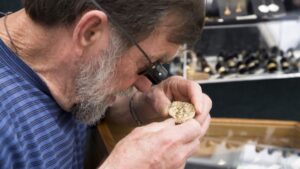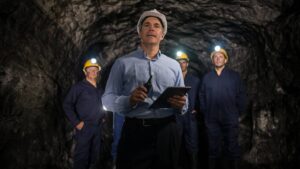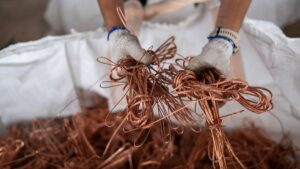‘Tens of billions’ needed for green power

Pic via Getty Images
The mining company boss behind one of the nation’s biggest green energy projects says the Australian government may need to guarantee offtake at premiums well above current prices to achieve its emission reduction targets.
Evolution Mining executive chairman Jake Klein said the “inconvenient truth” about the energy transition was who would pick up the bill for big ticket renewables projects.
The gold and copper producer has put a $7bn price tag on converting its Mt Rawdon mine in Queensland to a pumped hydro storage project that would help keep the lights on at night for about two millions homes under ambitious green energy targets.
Mr Klein suggested the taxpayer would need to foot the bill for the project to go ahead or the government would need to provide some guarantee on even higher prices for renewables power.
“Getting back to the inconvenient truth, who is going to pay for projects like Mt Rawdon and the many others that also need to be built?” he said.
“To me, it seems like there are really only two options. Either the government owns or lends money to a project like this, and finds the money on its balance sheet today, or it guarantees offtake at a higher future power price.”
Evolution, working alongside renewable energy experts ICA Partners, has spent four years and about $25m so far working on plans for Mt Rawdon.
Mr Klein said he now had direct experience of the challenges faced in hitting net zero emissions by 2050 and the costs involved in building renewables capacity.
“We need to have a mature conversation that if we want green power and to be at net zero by 2050, we are going to have to invest tens and tens of billions of dollars,” he said in a speech to the WA Mining Club.
“This doesn’t mean we shouldn’t do it, but it does mean we should agree and be transparent about who and how it is going to be paid for.
“The cost of getting this wrong is too significant.”
Evolution is about to stop mining at Mt Rawdon, about 75km southwest of Bundaberg, and will then process stockpiles of ore until the end of 2024-25.
The case for the pumped hydro project is that it could provide 20 gigawatts of storage at a strategic location between Brisbane and the Gladstone industrial hub.
A feasibility study showed the firming capacity would be enough to power two million Queensland homes as the state relies on renewables to cut emissions by 75 per cent by 2035 under laws passed earlier this year.
Mr Klein said the only way this ambitious emissions target could be achieved was through a much more co-ordinated, nationwide strategy.
“Delivering this green power is a nation building project and should be treated as such – we are talking about replacing a critical piece of national infrastructure,” he said.
“At present we have a federal government target, but its delivery is dependent on each state independently delivering its part of it – and to complicate matters even more, each state has its own target. This is not a recipe for success,” he said.
The Australian reported this week that Queensland was on track to miss its legislated renewable and emissions reduction targets, with the critical pumped hydro projects behind schedule, yet to secure environmental approvals and facing multibillion-dollar cost blowouts.
This article first appeared in The Australian.

UNLOCK INSIGHTS
Discover the untold stories of emerging ASX stocks.
Daily news and expert analysis, it's free to subscribe.
By proceeding, you confirm you understand that we handle personal information in accordance with our Privacy Policy.








